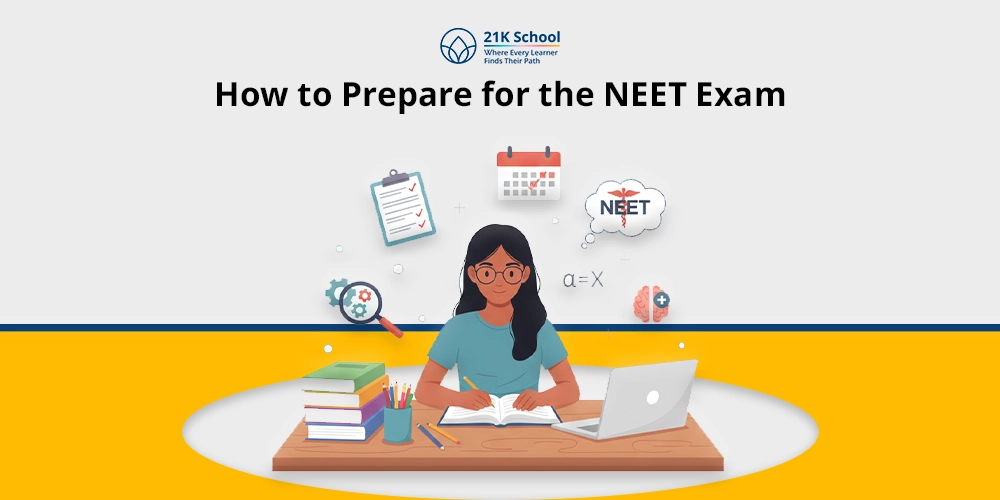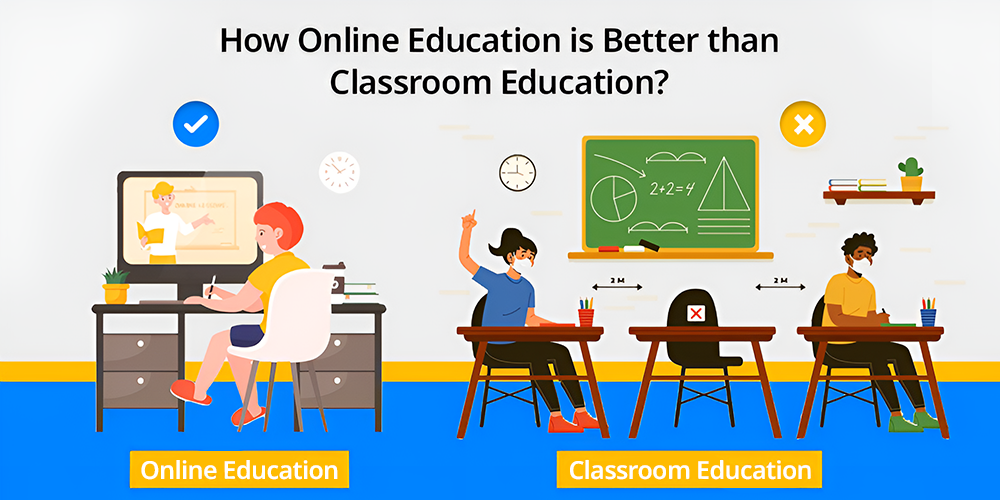
With the growth in technology and internet, online mode of education has seen a significant growth and popularity among people.
Students and teachers connect virtually in this setting, and various tools such as images, videos, animations, and online white boards are used to teach.
The Covid-19 pandemic has caused a significant shift in the education system in India and other countries, requiring nearly every school and educational institution to shift to an online mode of education.
After the pandemic, online education in India became increasingly popular, and many experts believe it will be the future of education.
There has been a debate between people regarding whether online education is better or class education. However, in light of the pandemic, online education has proven to be more beneficial and sustainable.
Contents
What is Online Education?
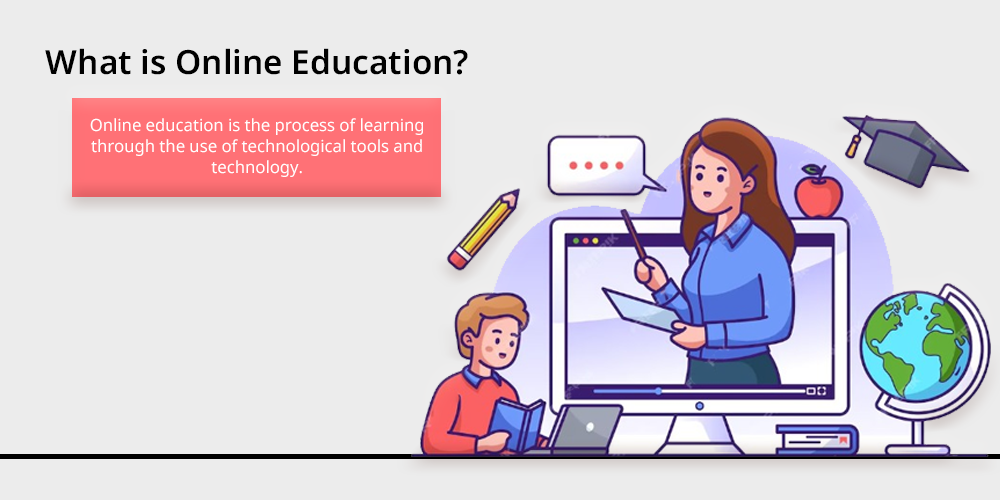
Online education is the process of learning through the use of technological tools and technology. M-learning, Edtech, digital classrooms, internet learning, and other terms are used for online learning.
Mobile phones, laptops, computers, tablets or any other type of technology can be used to learn online. One of the biggest benefits of online learning is that it gives everyone access to the same quality education regardless of socioeconomic background.
With the aid of the internet, online education makes it simple for children to connect at any time and from any location to share knowledge.
Merits of Online Education
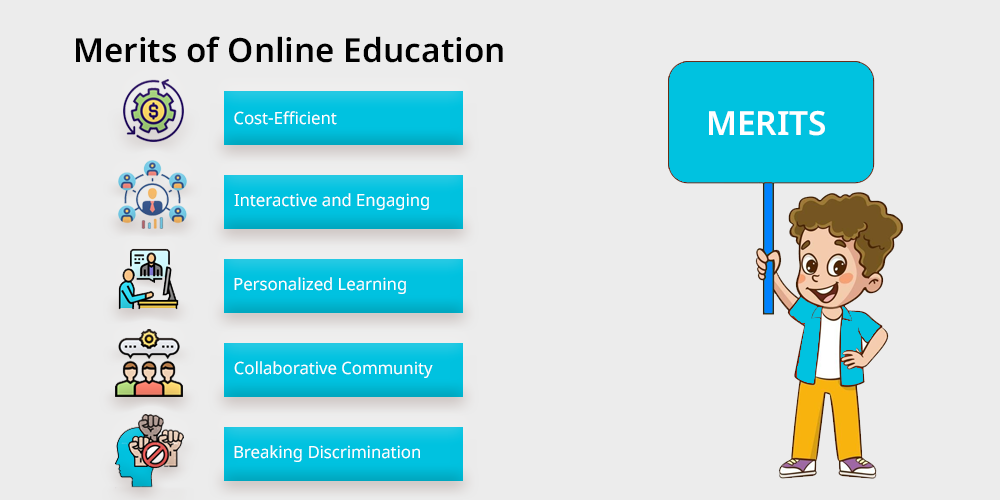
With so many advantages, children can learn to the best of their abilities through online education. Benefits of online learning could help close the gaps in traditional education and guarantee that every student has equal access to education.
The benefits of online learning are listed below.
- Cost-Efficient: Online education offers affordable education, which is one of its main advantages. Because online learning eliminates costs for students’ meals, transportation, rent, libraries, etc.
In addition to this, students also have to pay for educational materials and resources; however, with online learning, all books, study guides and resources are accessible online, saving students money. - Interactive and Engaging: Online learning is more efficient and interesting than traditional classroom instruction. Programs like gamification, microlearning, artificial intelligence, AR/VR and more are utilized in online education. Students become more engaged and focused in the online environment because learning is enjoyable.
- Personalized Learning: Every student has their own learning style and level of flexibility, and online education offers students individualized and personalised instruction. With individualized instruction, students can become more comfortable and improve their learning capacity.
- Collaborative Community: Children can successfully improve collaborative learning
through online education. Children can successfully establish appropriate connections with their teachers and peers through online education. This aids them in creating a community that will offer them opportunities in the future.
- Breaking Discrimination: Online education helps in breaking the stereotypes of discrimination, such as gender, social, economic, and so on. Online education makes equal access to high-quality education more easily. Students can continue their education online without worrying about prejudice.
Demerits of Online Education
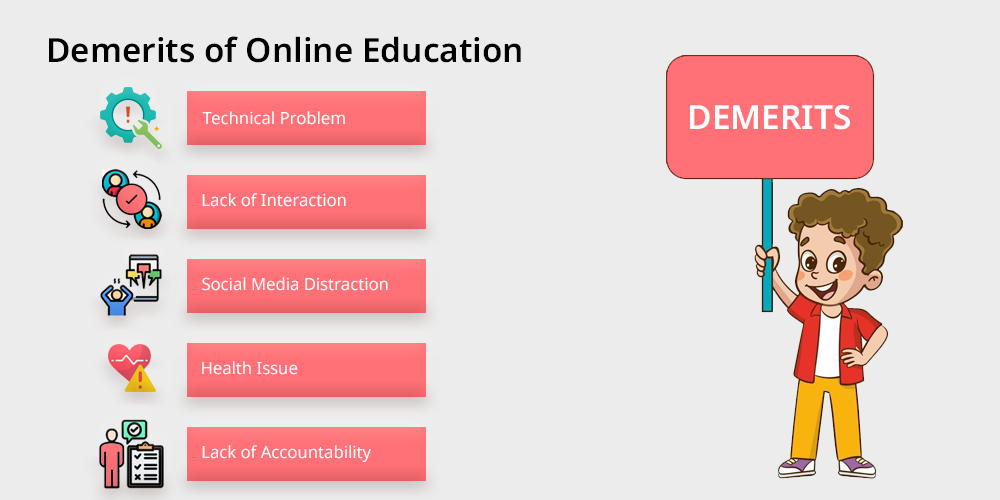
Online education provides equal opportunities regardless of the student’s socioeconomic background.
Students mental health may be enhanced by online learning. However, in addition to its benefits, online learning has a number of disadvantages. The following are some drawbacks of online learning.
- Technical Problem: Making online education more effective is hampered by a number of issues, including internet or technical issues.
Technical issues make it difficult for students to interact with their instructors and take part in online courses. Even technical problems or computer malfunctions can disrupt online learning. - Lack of Interaction: One of the primary problems with online learning is that it makes students feel more socially isolated. The absence of in-person interaction in online learning hinders the teaching and learning process.
- Social Media Distraction: Online learning causes students to develop a social media addiction. As a result, students struggle to finish the lesson because they are distracted.
The teaching and learning process is hampered by social media notifications and pop-ups from websites like Facebook, Instagram and Twitter. - Health Issue: Due to excessive screen time, the health of children deteriorates as they emit blue light, which strains their eyes.
Excessive screen time is one of the biggest problems with online education. Students who spend a lot of time bent over a screen may also develop bad posture and other health problems. - Lack of Accountability: One of the biggest issues with online education is a lack of accountability, which causes problems for both teachers and students. Online learning’s lack of accountability creates complicated matters and hampers the credibility process.
What is Classroom Education?
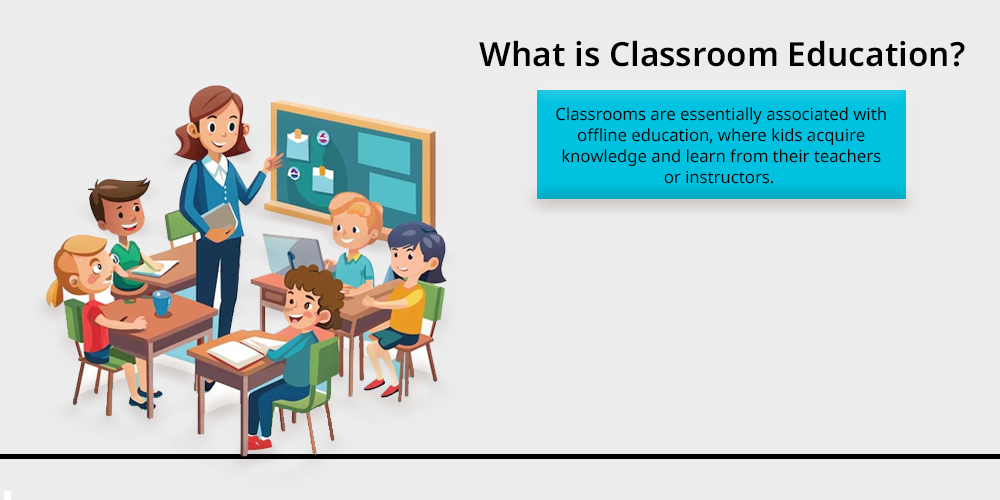
The process of learning within a school setting is known as classroom education. Classrooms are essentially associated with offline education, where kids acquire knowledge and learn from their teachers or instructors.
Every child who attends school will go to the classroom to learn and engage with their peers and teachers. In this sense, social interaction and education take place in a classroom.
Children can feel that they are at the same level of class proficiency because even online education platforms are adopting the classroom teaching and learning process.
Advantages of Classroom Education
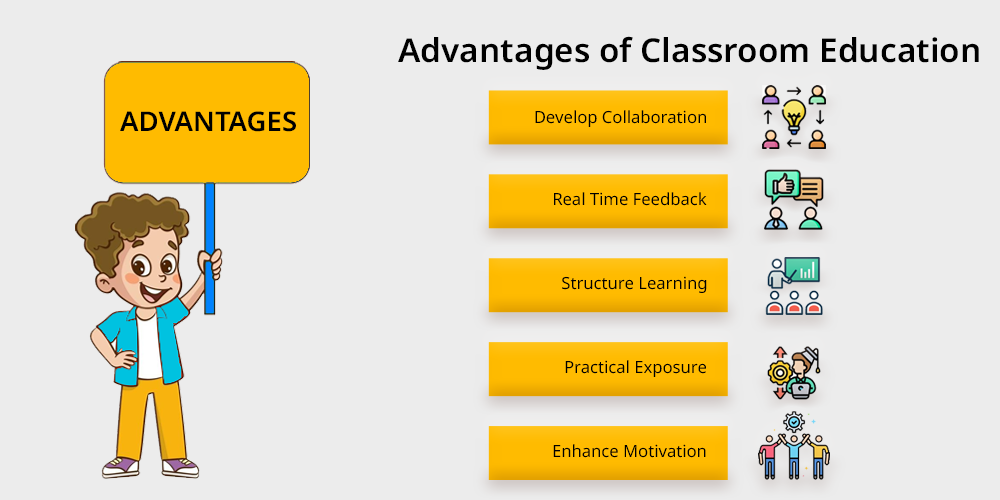
There are many advantages to classroom education since it offers a structured, individualized setting where children can improve their cognitive and social skills. The benefits of classroom education are listed below.
- Develop Collaboration: Children can improve their collaborative skills through classroom education because it fosters connections between students and teachers, which enables them to successfully build mutual understanding and a healthy community.
- Real Time Feedback: Classroom learning gives teachers immediate feedback, allowing them to comprehend students’ performance and areas of weakness. Students can see where they need to improve as a result.
- Structure Learning: Classroom Education allows kids to engage in structured and scheduled education. This allows kids to enhance their engagement level and make the teaching-learning process more productive, and allows them to develop creative thinking skills.
- Practical Exposure: Practical learning experiences are offered by classroom education, which enables children to interact with their teachers and instructors in real-world situations during class.
- Enhance Motivation: Teachers inspire students to perform well and increase their sense of satisfaction through classroom instruction, which enables them to work effectively and makes learning more interesting and simple.
Disadvantages of Classroom Education
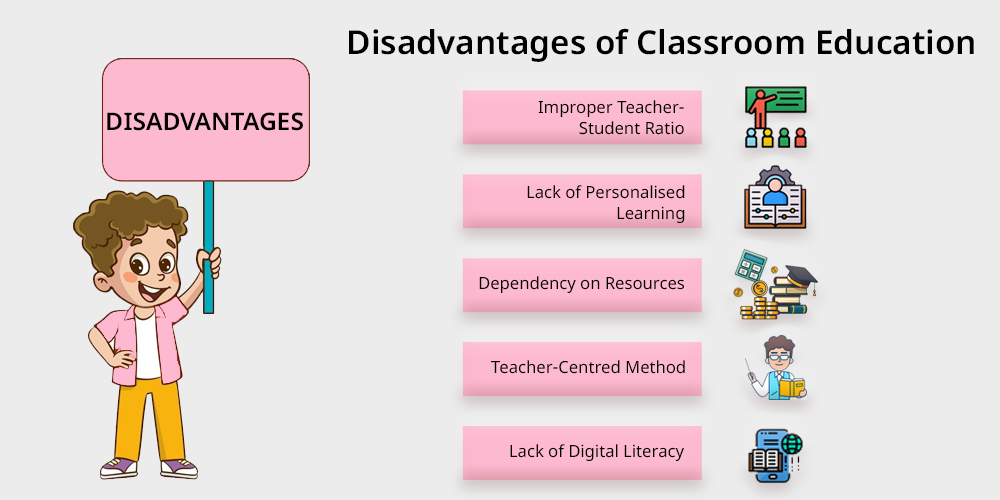
Classroom education is considered as best for early childhood learning, however, there are various disadvantages of classroom education that hinders the true learning outcomes for quality education.
Here you can check the disadvantages of classroom education mentioned below.
- Improper Teacher-Student Ratio: Occasionally, the size of the classroom makes it difficult for students and teachers to communicate effectively, making it challenging to provide equal education. For instance, a class size might have one teacher for every 30 to 40 pupils.
- Lack of Personalised Learning: Personalized learning is not offered by classroom instruction because different students may have different learning styles and speeds. The rigid schedule and structure of traditional classrooms may not be able to meet their needs.
- Dependency on Resources: Classroom education faces budget issues, money issues, physical challenges and so on, due to which it becomes tough to manage all the requirements of classroom education. Lack of these resources also hampers dynamic education and prevents it from achieving its full potential.
- Teacher-Centred Method: The teacher-centric model of classroom education places the teacher as the main knowledge source. This method hinders peer-to-peer learning, a 21st-century endeavor in which students share their knowledge with one another.
- Lack of Digital Literacy: Digital literacy is hampered by classroom education’s reliance on lectures and textbooks, which may not be the most engaging or effective teaching methods for all students.
Difference Between Online Education vs Classroom Education
While online learning offers flexibility, offline learning offers in-person interaction and engagement. There are benefits and drawbacks to both in-person and virtual learning.
For education to be holistic, all teaching modalities are necessary. Here is the detailed comparison between traditional learning and online learning.
| Aspects | Classroom Education | Online Education |
| Definition | A classroom education is the process of acquiring knowledge in a school classroom through offline mode. | Online education is the process of acquiring knowledge or attending classes with the help of technology and technical tools, such as laptops, mobile phones, etc. |
| Interaction | Classroom education provides direct communication with instructors and fellow students, which promotes feedback and cooperative learning. | Only education mostly depends on virtual communication via video conferences, forums and online discussions. |
| Structure | Classroom students give students a structured timetable and curriculum, creating a disciplined learning environment. | Students can study at their own pace and convenience because online learning offers schedule and pace flexibility. |
| Affordability | Classroom education is a little bit expensive compared to online education, as it does not require to spend extra money on travel, accommodations, | Online education is more affordable because of lower tuition and travel costs, and doesn’t require setting a physical classrooms. |
| Examples | Classroom education is all about physical education attended through schools and educational institutes. | Online education can be attended through online platforms such as Zoom, Google Meet, Google Classroom, Ding, Slack, etc. |
Benefits of Online Education Over Classroom Education
The following are some of the benefits of online education over classroom education.
1. No Need to Relocate
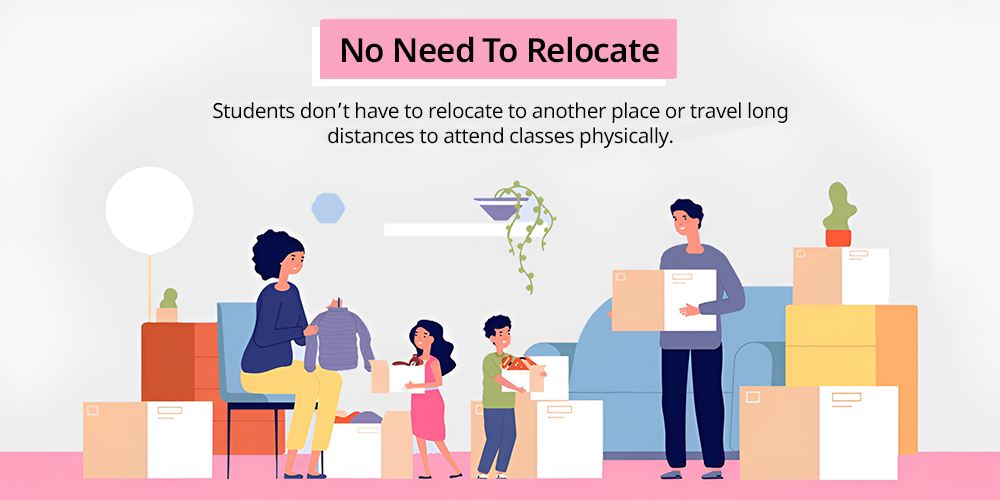
It is one of the best features of online education, where students don’t have to relocate to another place or travel long distances to attend classes physically.
Students can easily attend the classes from their home or anywhere as per the convenience in a comfortable environment.
With a good internet connection, it is possible to attend live classes or watch pre-recorded classes while traveling.
2. Multiple Courses and Programmes
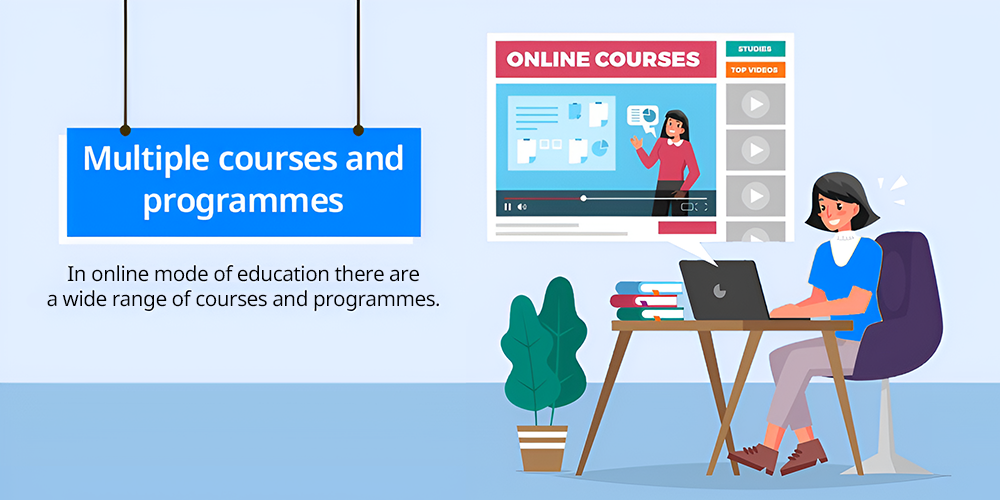
In online mode of education there are a wide range of courses and programmes and students can easily enroll into a program of their choice.
Many institutions and colleges provide various degrees and courses online; in this case, students have the option of selecting an institution that offers relevant courses that can be beneficial in building a successful career in the future.
3. Affordable
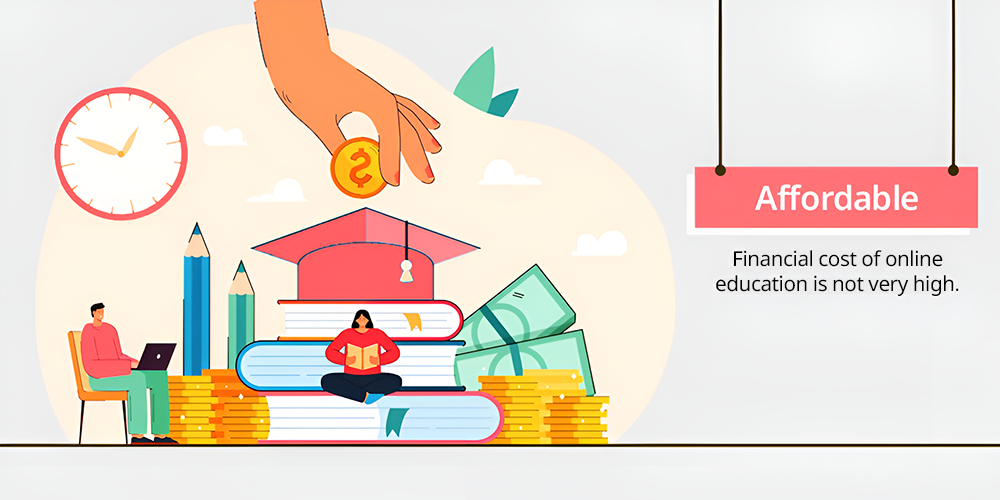
Financial cost of online education is not very high, which makes it affordable for many and provides a wider range of flexibility. It lowers the expense of transportation, meals, and rental accommodation.
Online courses can be found by students that are both cost-effective and appropriate for their career plans.
Different platforms also provide a variety of offers that can help reduce the cost of learning. Furthermore, the study material is easily available online or provided by the institution.
4. Time Management
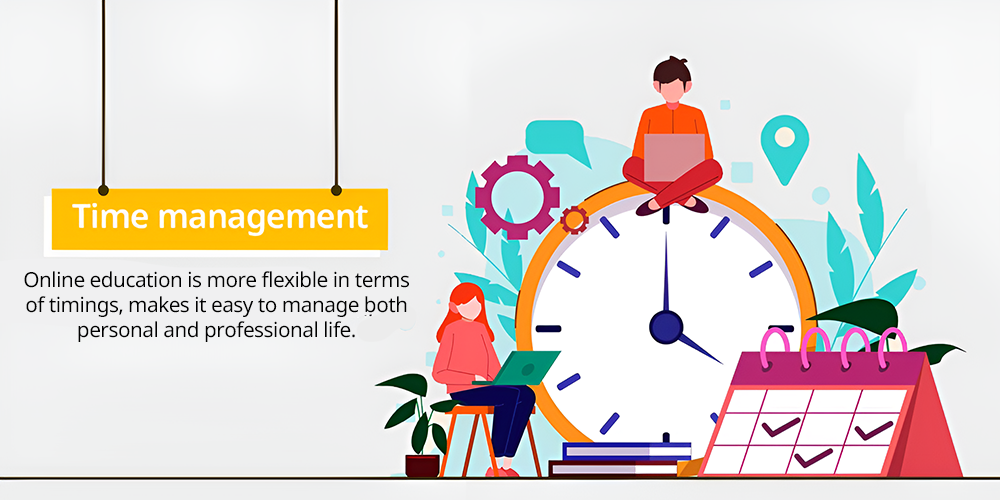
Time management is a very crucial skill that everybody should learn. Online mode of education is more flexible in terms of timings, which makes it easy to manage both personal and professional life.
Students can learn to properly schedule their studies and assignments without facing any kind of difficulties. Understanding how to manage the time is a skill that will be beneficial in the long run.
5. Better Knowledge of Technical Skills
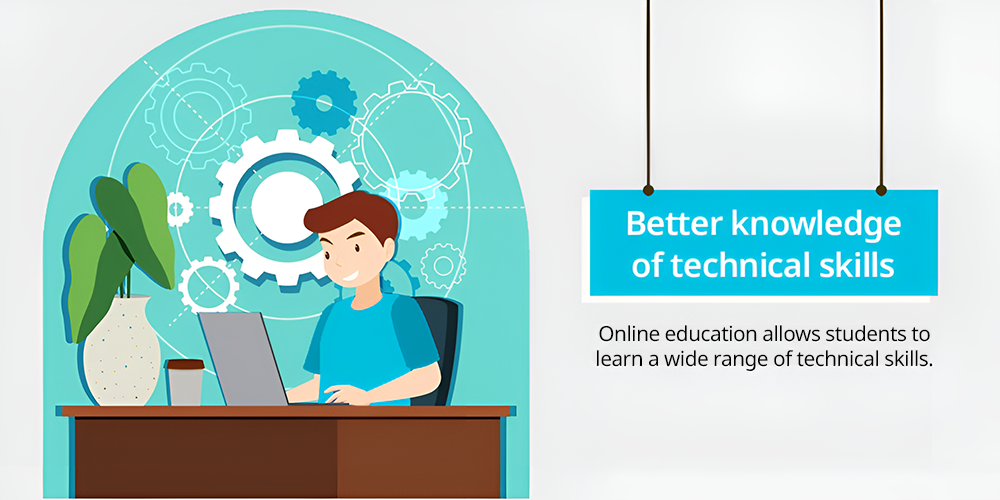
In today’s world, having a better knowledge of technology is critical. Online education allows students to learn a wide range of technical skills that will be useful in the future.
Students learn how to use their devices properly in online mode, such as smartphones, computers, or laptops. They also get familiar with different softwares like Zoom, Google Meet, MS Office and more.
6. Better Concentration

Concentration is important in education because a focused mind can easily understand things and solve problems.
Online education provides a comfortable environment where students can concentrate on their lectures and assignments.
Some students may struggle to stay focused in crowded classrooms, but this is not the case with online learning. It makes it easy for those students to concentrate on their studies who get easily distracted.
Conclusion
Seeing the present situation around the world it is proven that the online education is here to stay. The pandemic has also given a huge boost to it.
It is true that online learning offers students flexibility, a focused environment, and the opportunity to learn time management skills.
This provides a clear picture that it can be better than the traditional classroom education. However, there is still much work to be done in the field of online education in India.


